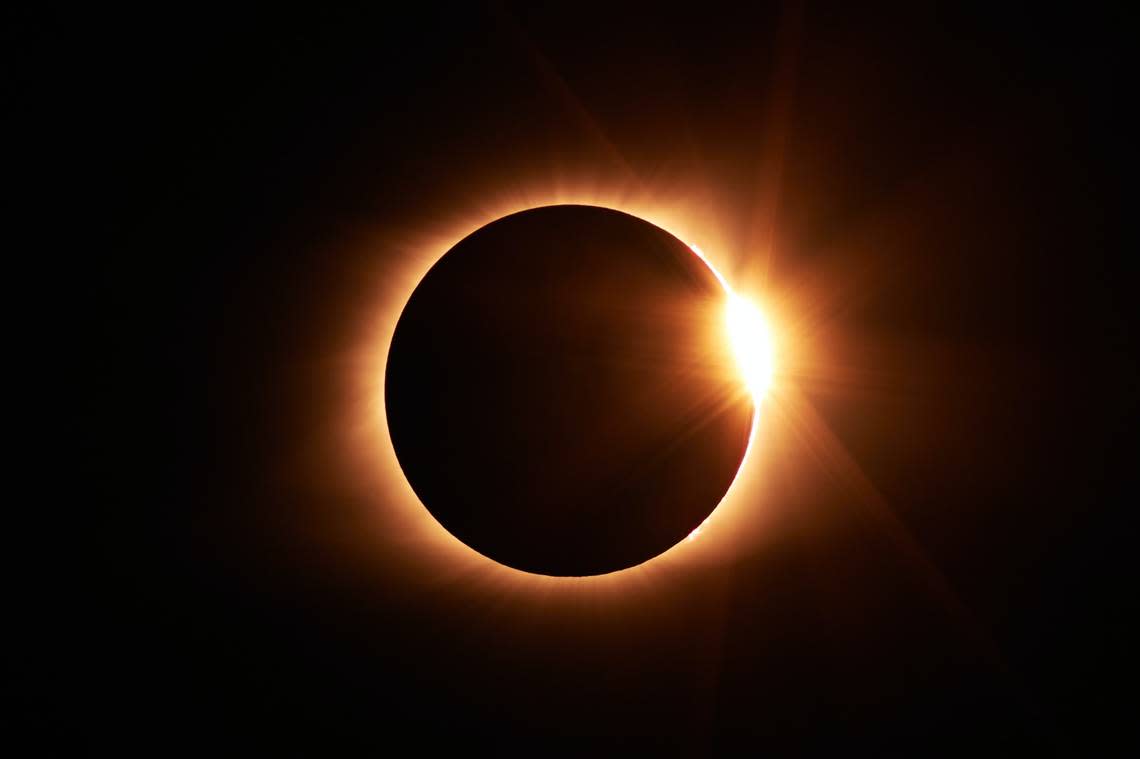Rare solar eclipse will pass over Australia. Watch live — but you’ll have to act fast

A rare solar eclipse will pass over Australia and southeast Asia. The total eclipse will be visible only in a very small area, but the event will be livestreamed for audiences around the world to enjoy.
The hybrid solar eclipse will begin in the Indian Ocean around sunrise, cross western Australia, Timor-Leste and Indonesia before ending in the Pacific Ocean, according to a fact sheet from the Astronomical Society of Australia.
The partial eclipse will last about three hours beginning at 10:04 p.m. EDT on April 19. The total eclipse is much shorter and will last only about one minute beginning at 11:29 p.m. EDT, according to the Australian Department of Industry, Science and Resources.
The path of totality — the area where the total eclipse is visible — will pass over western Australia’s Ningaloo region, according to local authorities. Exmouth is “the only town within the line of totality,” officials said.
The eclipse will also be livestreamed by several different organizations:
Time And Date will begin its livestream at 9:30 p.m. EDT on April 19.
Western Australia’s tourism department will begin its livestream at 10 p.m.
NASA will begin its livestream at 10:30 p.m.
Solar eclipses occur when the moon passes between the Earth and the Sun, casting a shadow across the Earth. When the moon only blocks out some of the Sun, this is called a partial eclipse. When the moon blocks out the entire Sun, this is called a total eclipse. Viewers will see a different type of eclipse depending on when and where they are watching.
Hybrid solar eclipses are a very rare type of eclipse that occur “once every 10 years,” according to the Australian Department of Industry, Science and Resources.
The term “hybrid” refers to the path of the eclipse. Hybrid eclipses cannot “be observed at any point along the path,” according to the Astronomical Society of Australia.
The Royal Observatory of Madrid shared a map of this hybrid solar eclipse on Twitter.
Mañana día 20 de abril tendrá lugar un eclipse mixto de Sol que combinará fases anulares y totales a lo largo de su trayectoria. No se verá en España, pero se podrá observar desde el sudeste de Asia, Oceanía y el Pacífico. Más info: https://t.co/SZag00wMww pic.twitter.com/XlWEmcFnBN
— Real Observatorio (@RObsMadrid) April 19, 2023
It is not safe to look directly at a solar eclipse when watching in person, the Astronomical Society of Australia said. Instead, viewers should wear specially made eclipse glasses to protect their eyes.
‘Bewildered’ photographer spots freaky spiral gliding through Alaska’s northern lights
Giant space doughnut? New NASA mapping reveals longstanding mysteries of iconic nebula
Videos show cluster of fireballs flew over Florida. It was not a meteor, experts say

